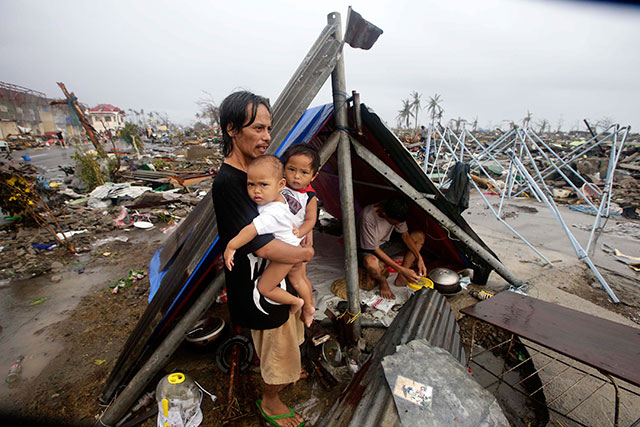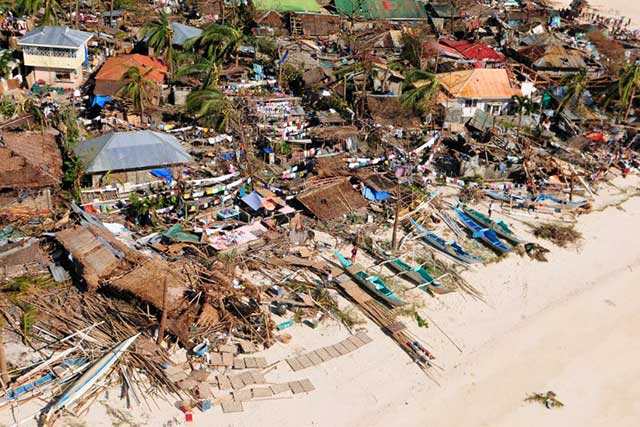Tacloban devastated by super typhoon Yolanda (Haiyan)
November 13, 2013 at 17:41

WAITING. Calamity victims wait for food relief outside their makeshift tent in Tacloban city. Photo by EPA/Dennis Sabangan
MANILA, Philippines – A foreign aid official said Sunday, November 10, that the devastation left by super Typhoon Yolanda (international codename Haiyan) in Leyte, is comparable to the aftermath of the 2004 Indian Ocean tsunami.
“The last time I saw something of this scale was in the aftermath of the Indian Ocean tsunami,” said Sebastian Rhodes Stampa, the head of a UN disaster assessment coordination team, referring to the disaster that claimed about 220,000 lives, mainly in Indonesia, Sri Lanka, India, Thailand, Maldives, and Somalia.
“This is destruction on a massive scale. There are cars thrown like tumbleweed and the streets are strewn with debris,” he said.
In Tacloban and in nearby coastal towns, concrete slabs are the only part of many homes remaining, vehicles flipped over and power lines destroyed.
Watch this video showing the extent of the damage in Tacloban below.
Yolanda hit Leyte and Samar with maximum sustained winds of around 235 km/h Friday, November 8, and generated waves up to three meters (10 feet) high that surged deep inland. Foreign meteorologists have put the wind speeds at a higher figure: 315 km/h.
However, while Leyte was believed to have been the worst hit, the carnage extended across a 600-km stretch of islands through the central Philippines.
A few dozen other deaths had been confirmed in some of these areas, but authorities admitted they were completely overwhelmed and many communities were still yet to be contacted.

SEVERELY HIT. The coastline in Iloilo after typhoon Yolanda/Haiyan hit the province. Photo by AFP/Raul Banias
“We’re still establishing command and control through logistics and communications,” military spokesman Lieutenant Colonel Ramon Zagala told Agence France-Presse.
The Philippines endures a seemingly never-ending pattern of deadly typhoons, earthquakes, volcano eruptions and other natural disasters.
It is located along a typhoon belt and the so-called Ring of Fire, a vast Pacific Ocean region where many of Earth’s earthquakes and volcanic eruptions occur.
However, if the feared death toll of above 10,000 is correct, Yolanda/Haiyan would be the deadliest natural disaster ever recorded in the Philippines.
Until Yolanda, the deadliest disaster was in 1976, when a tsunami triggered by a magnitude 7.9 earthquake devastated the Moro Gulf on in Mindanao, killing between 5,000 and 8,000 people. – Reports from Agence France-Presse/Rappler.com

















